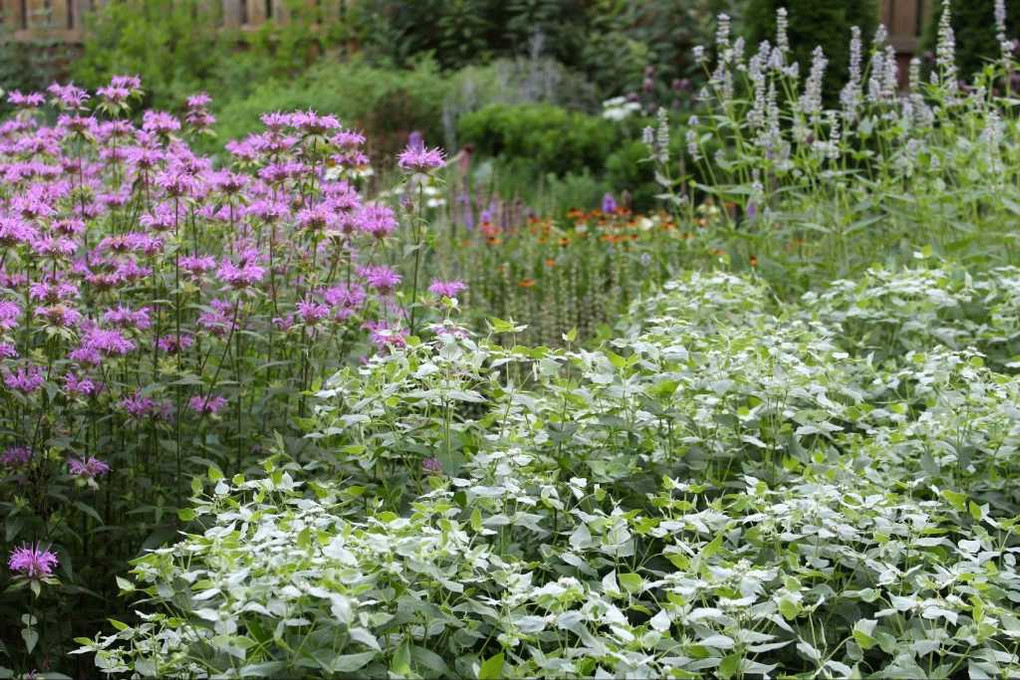
PERENNIAL OF THE YEAR 2025 - Pycnanthemum muticum - Blunt Mountain Mint
Posted by Radovan Hajek on Feb 18 2025
Vigorous, tough, disease free, non-flopping, dense and really good ground covering, aromatic, completely deer and rabbit resistant, all summer flowering, heat and humidity tolerant and pollinator magnet!
And even when not flowering still highly ornamental native perennial!
Who wouldn't want that?
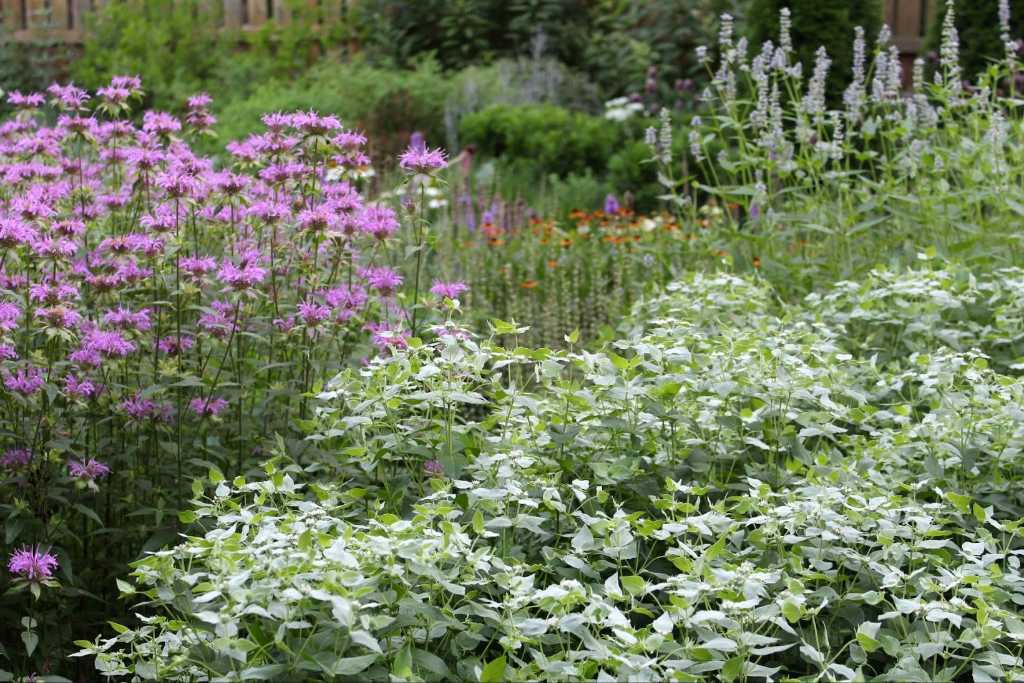
Pycnathemum muticum with Monarda sp. in naturalistic garden, designed and maintained by ©Andrew Marrs Garden Design
But nothing is ideal as it seems at the beginning, so even this (otherwise) superior plant has some cons :
It is such a strong and vigorous plant that it will out compete weaker neighbors - mostly by steady spreading tendencies. But if you know that, you easily take the action and limit the rhizomes by shovel in the spring.
With smaller clumps you can pull them by hand (and cut with scissors, or break them off). These rhizomes are right under the surface or on the surface, so it's really no digging or extra hard work.
This plant is not suitable for small gardens, unless you stay on the top of it.
SOME FACTS :
- native perennial from Texas, diagonally across part of Midwest up to New England (AL, AR, CT, DC, DE, GA, IL, IN, KY, LA, MA, MD, ME, MI, MO, MS, NC, NH, NJ, OH, PA, RI, SC, TN, TX, VA, VT, WV)
- naturally occurs in meadows, grassy open areas, low woods openings, bogs, moist thickets, swamps
- full sun is the best = no flopping. Will grow fine in half shade (less than 6 hours of direct sunshine) up to light shade, BUT the more shade the more it's prone to flop or lean
- adaptable plant for average soils, fertile soils, up to clay. Average moisture to moist. This species likes more moisture, but it has proven to be drought tolerant for us (Bloomington, IN, zone 6a) and we haven't seen any wilt or decline after 6 weeks of late summer drought
- usually around 2.5-3' tall and wide, but keeps spreading wide. If you don't limit the spreading, it won't stop and will form colonies. It will be more aggressive on moist soils and fertile soils
- flowers from June/July to September/October (depending on your zone)
- suitable for zones 4 to 8 (heat zones 4 to 10)
- due to it's strong minty aroma is deer and rabbit proof. Contains insect repellant pulegone - Was used in moth-deterrent sachets and can be rubbed on clothes to deter ticks (or put in pockets).
- 2018 Plant of the Year by The Garden Club of America (GCA) and Perennial of The Year 2025 by Perennial Plant Association (PPA)
- can be used as fresh cut flower, or for dried arrangement
- despite it's height, it is really ground covering plant
- other common names = Clustered Mountain Mint, Short-toothed Mountain Mint, or Broad-leaved Mountain Mint
- there are other native mountain mints with silver bracts (e.i. P. albescens, P. beadlei, P. incanum)
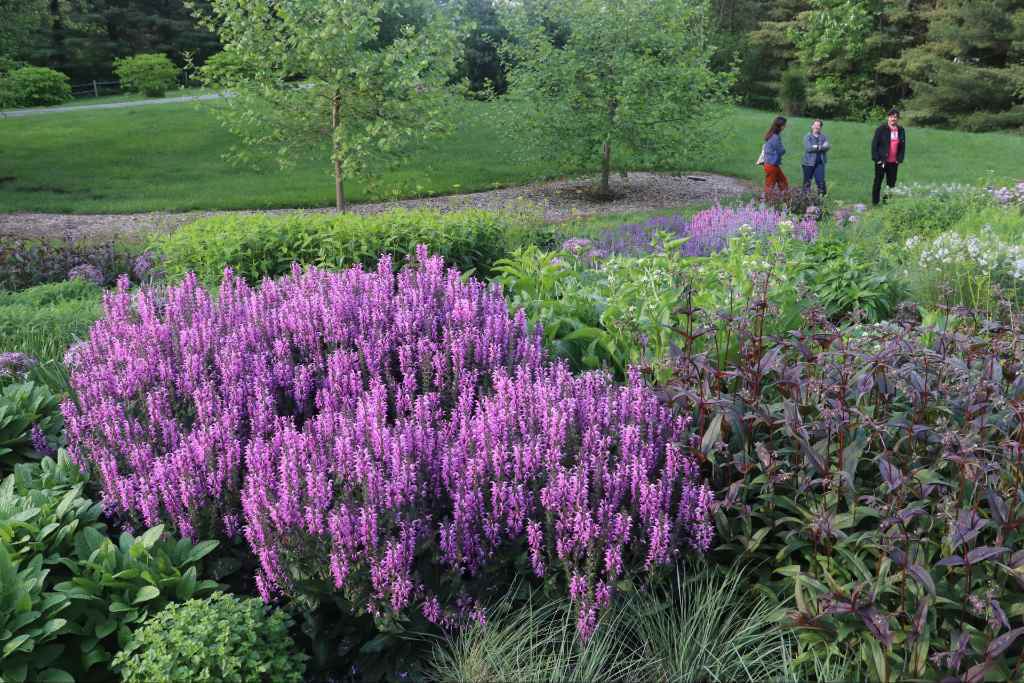
Salvia 'Back To The Fuchsia' is stealing the show in this picture. But our mountain mint is right behind it. It is beginning of May and it's already 1-1.5' tall and you can notice very dense wide clump of it. Naturalistic garden in Bloomington, IN, designed by Andrew Marrs Garden Design ©US Perennials
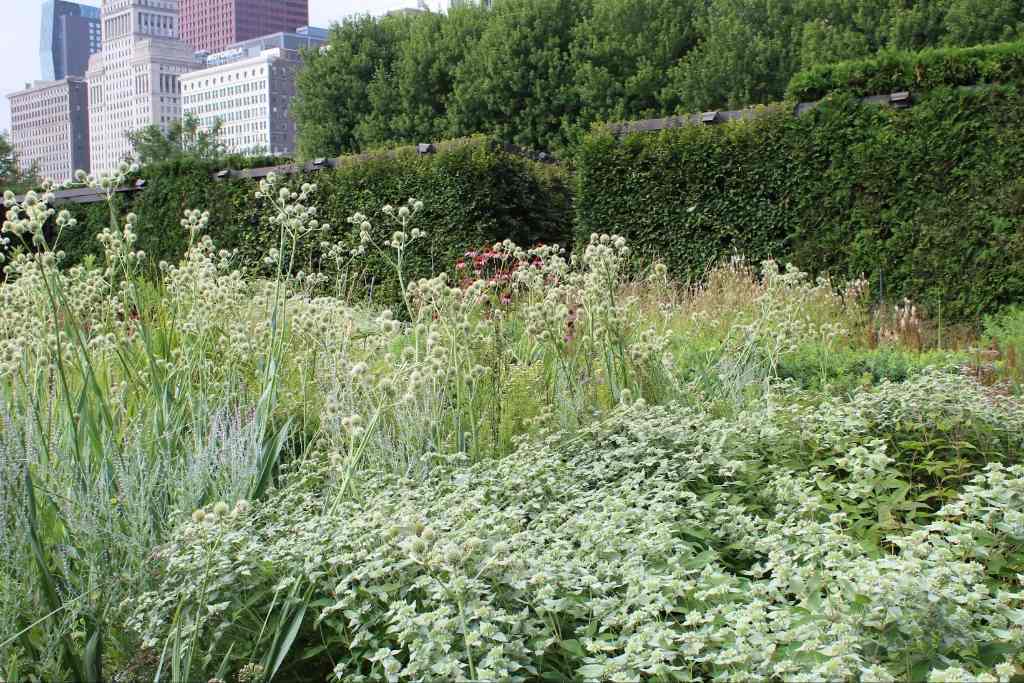
Pycnanthemum muticum in Piet Oudolf's Lurie Garden in Chicago. Here with Eryngium yuccifolium (Rattlesnake Master) in early summer (June, June/July) ©Andrew Marrs Garden Design
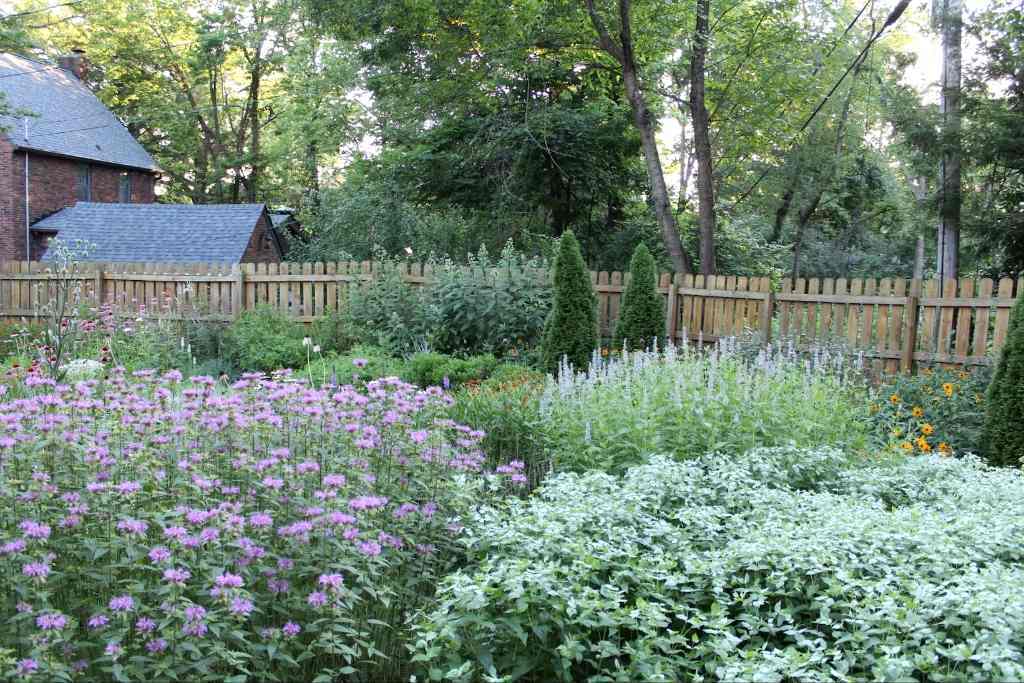
Blunt mountain mint looks better in medium sized or bigger gardens, where it has space to spread some. Bloomington, IN. Garden designed, executed and maintained by ©Andrew Marrs Garden Design
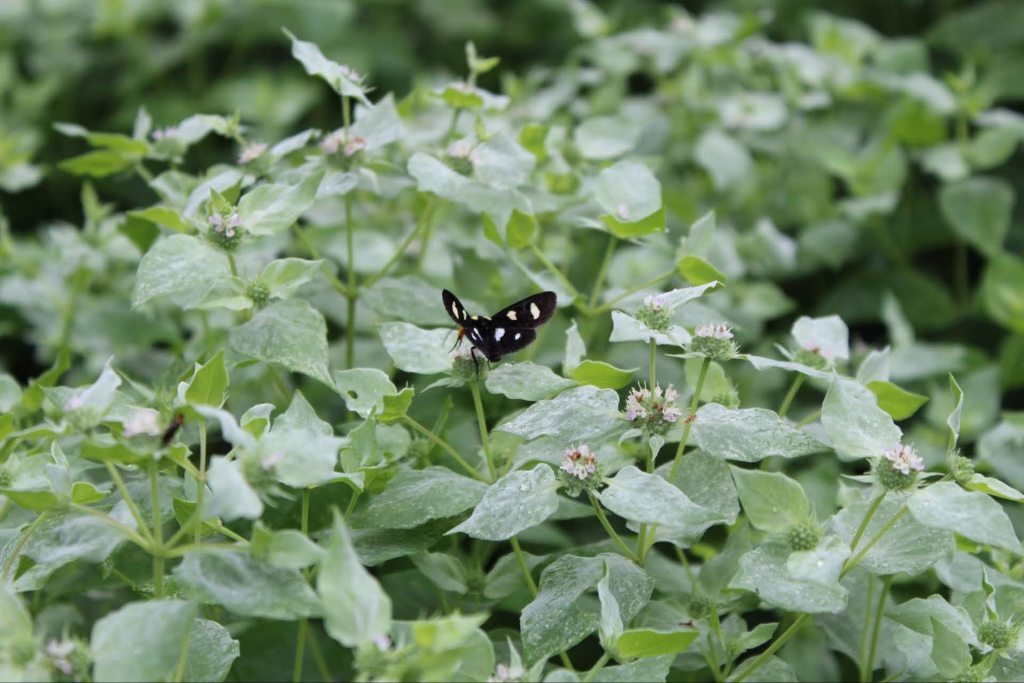
The real flowers on Blunt Mountain mint are tiny pinkish-white flowers, arranged in clusters. What many people see as flowers are the silvery gray bracts (modified leaves). Just like the majority of Mint family (Lamiaceae) plants, those small flowers attract myriads of native insects, including native bees, bumblebees (and honeybees), variety of wasps, flies, butterflies, moths, and beetles (including predators/parasitoids of the brown marmorated stink bug). Here with Eight-spotted Forester (Alypia octomaculata). This is a true pollinator plant that will buzz all summer long. ©Andrew Marrs Garden Design
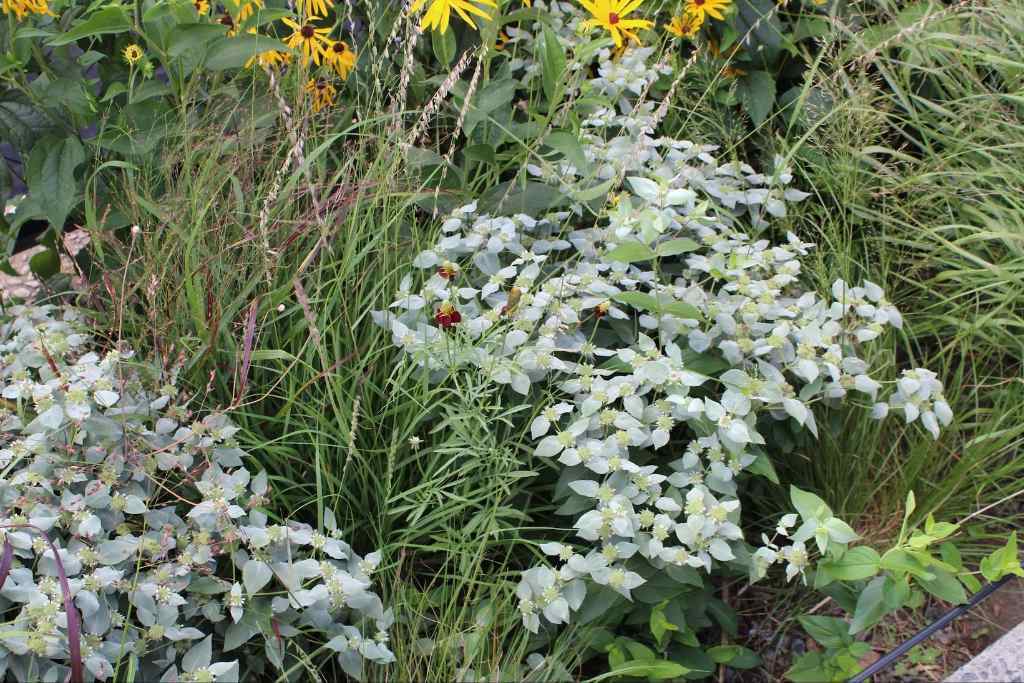
Young plants of Pycnanthemum muticum in High Line in NY, designed by Piet Oudolf. Photo and ©Andrew Marrs Garden Design
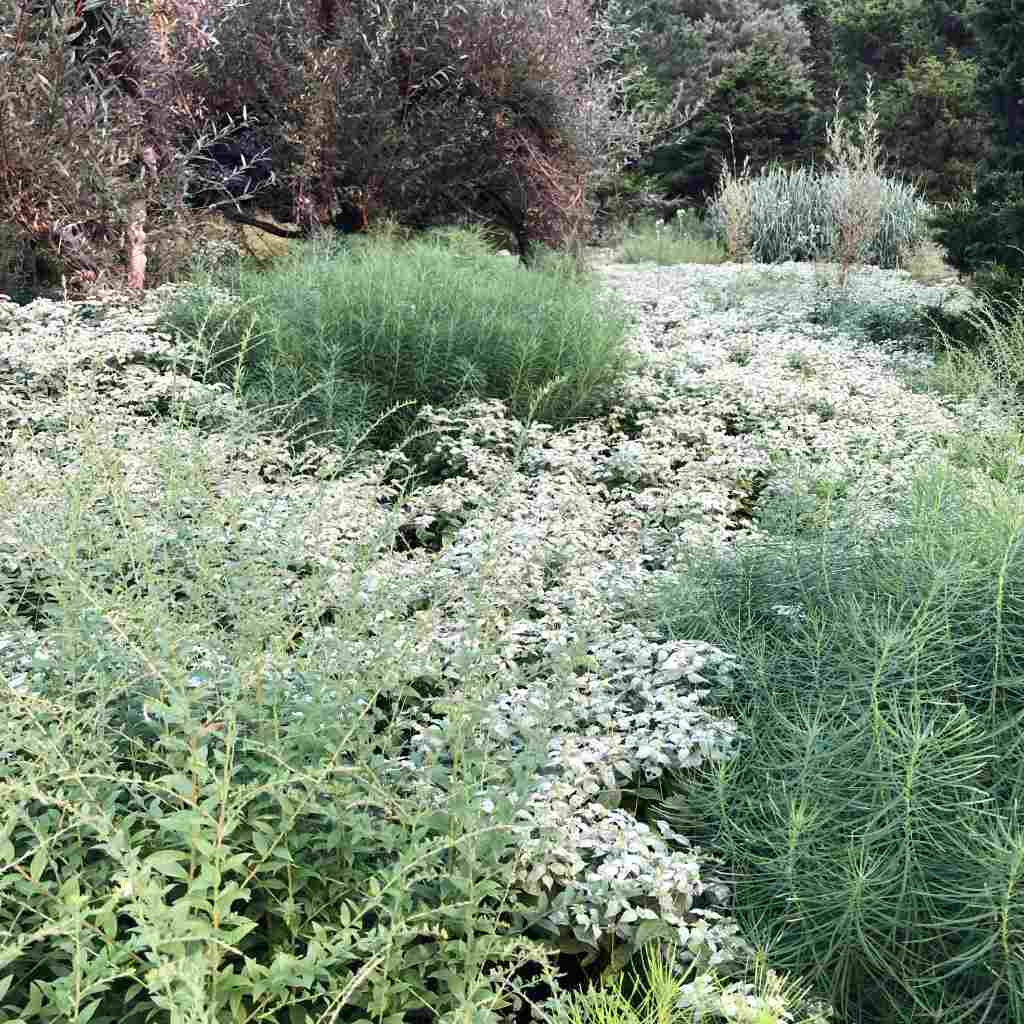
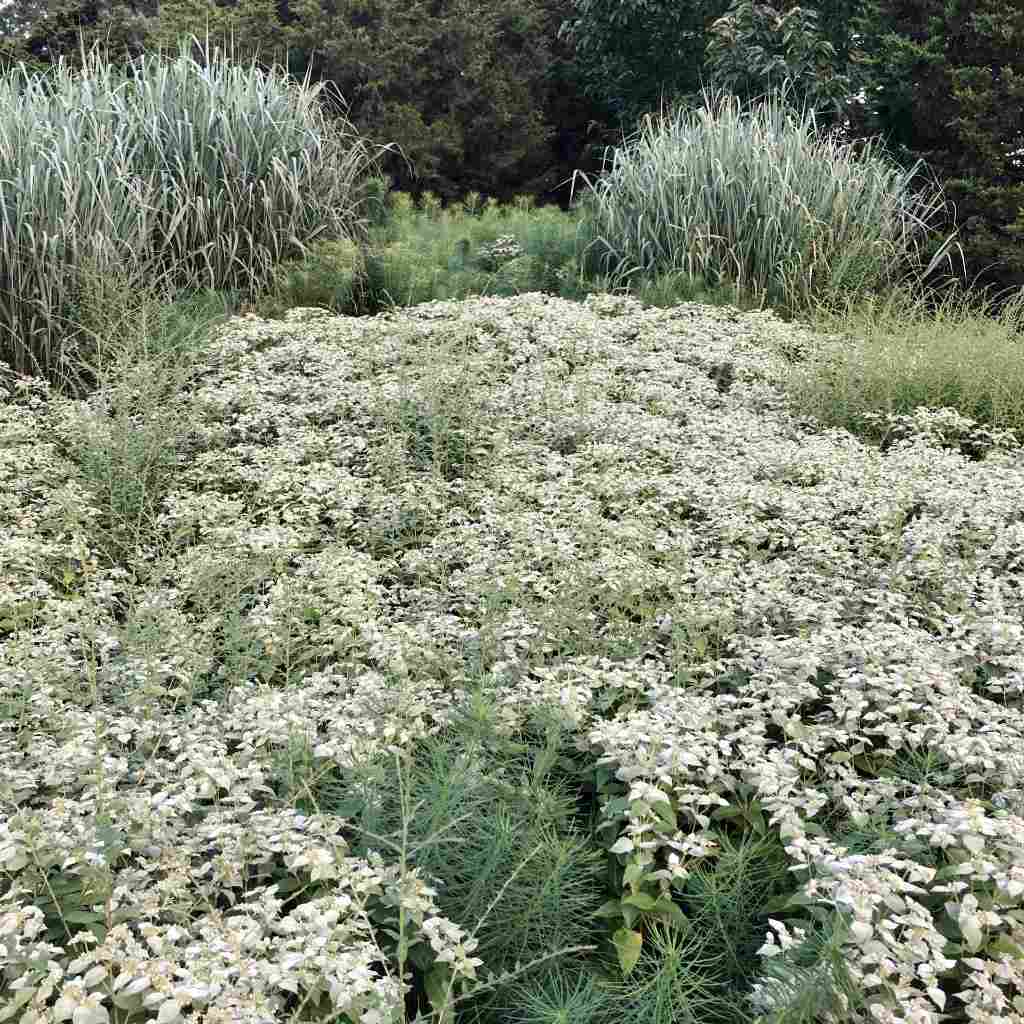
Two pics above - Pycnanthemum muticum in a meadow section of Chanticleer Garden, PA. Provided enough space and some freedom to spread and naturalize, this mountain mint will create dense monocultural colonies and will cover large areas. Therefore, the best companions are strong competitive plants like Amsonia (here A. hubrichtii), Baptisia, Eupatorium (Joe Pye Weed), Rudbeckia, (Black-eyed Susan), Monarda, Solidago, or bigger grasses like Panicum virgatum (Switchgrass). You can combine it with smaller plants, but keep an eye on the spread or limit the spread with a shovel in the spring. ©US Perennials
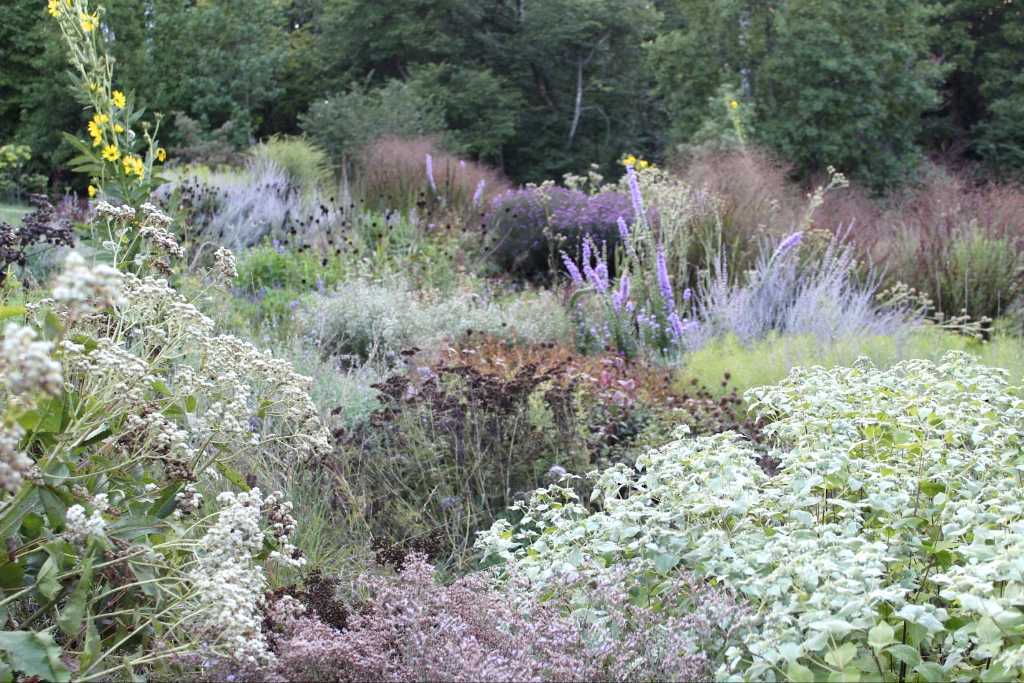
Blunt Mountain Mint in full summer in naturalistic garden in Bloomington, IN. Design and photo ©Andrew Marrs Garden Design
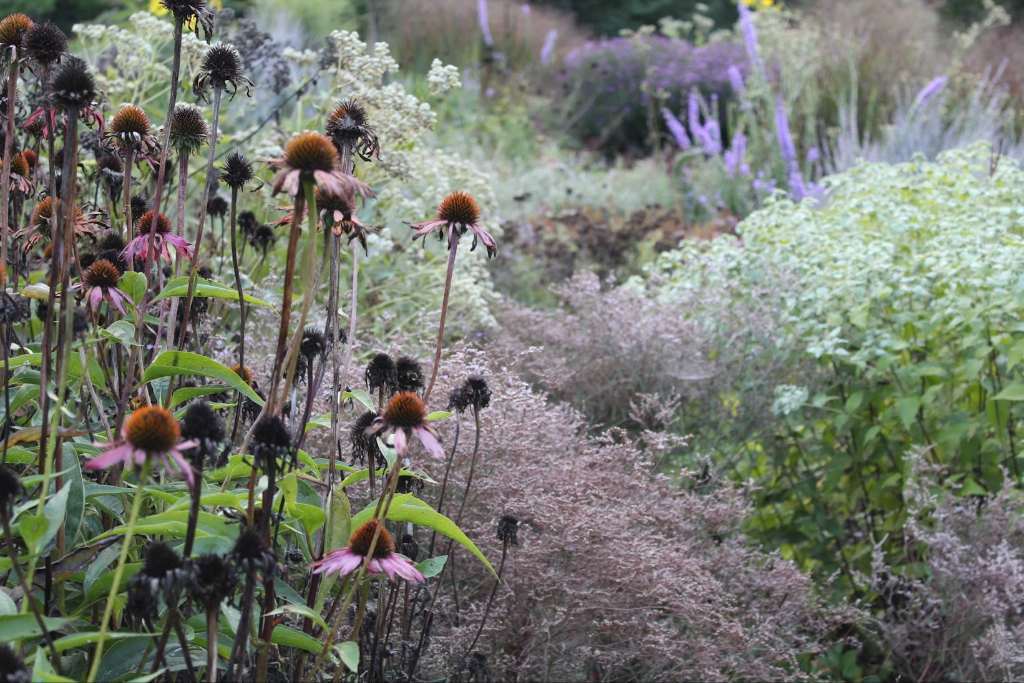
Pycnanthemum muticum isn't really the center piece plant, but it provides excellent back drop for other plants. The "cool silvery quality" from July on is very valuable. Naturalistic garden designed by ©Andrew Marrs Garden Design
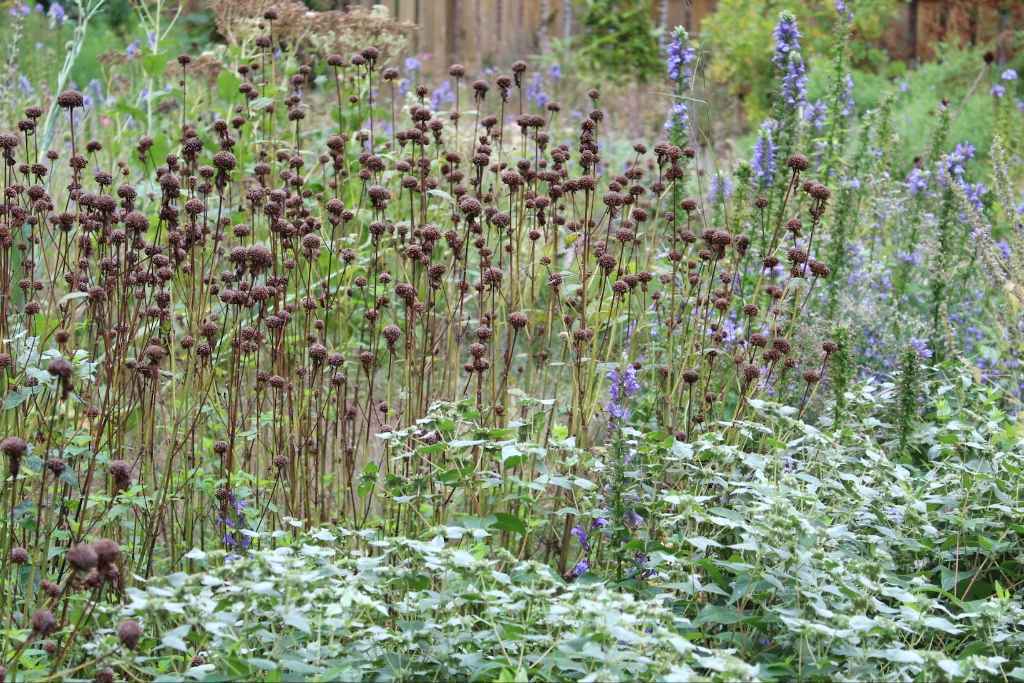
The silver look persist through the rest of the season till the frosts. Here at the end of summer/in early fall with seedheads of Monarda and blue flowering Lobelia siphilitica (Great Blue Lobelia). ©Andrew Marrs Garden Design
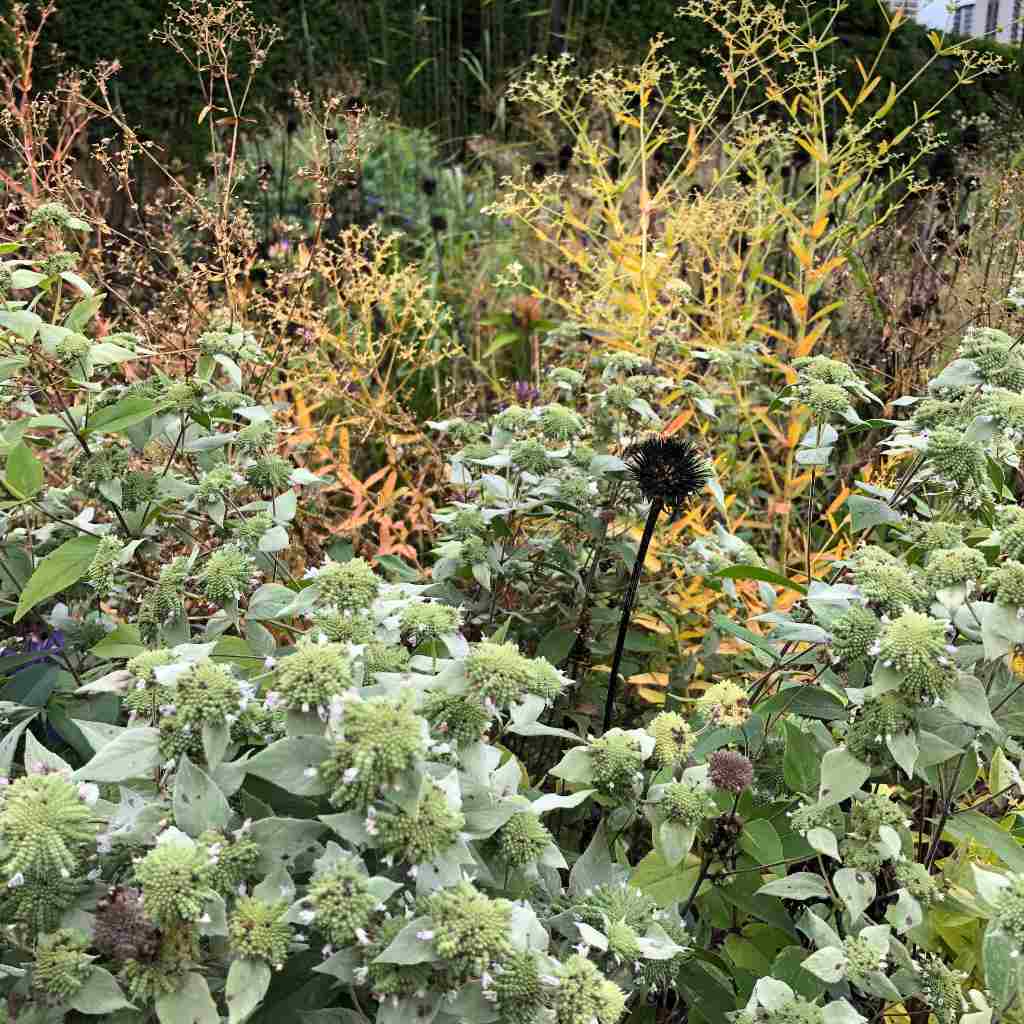
Blunt Mountain Mint in Lurie Garde in Chicago in the beginning of October. Other perennials show their seedheads (Echinacea pallida) or their fall color (coppery orange color of Euphorbia corollata - Flowering Spurge), but our mountain mint stays the same. The seedheads in time often develop "octopus-like" shape. ©US Perennials
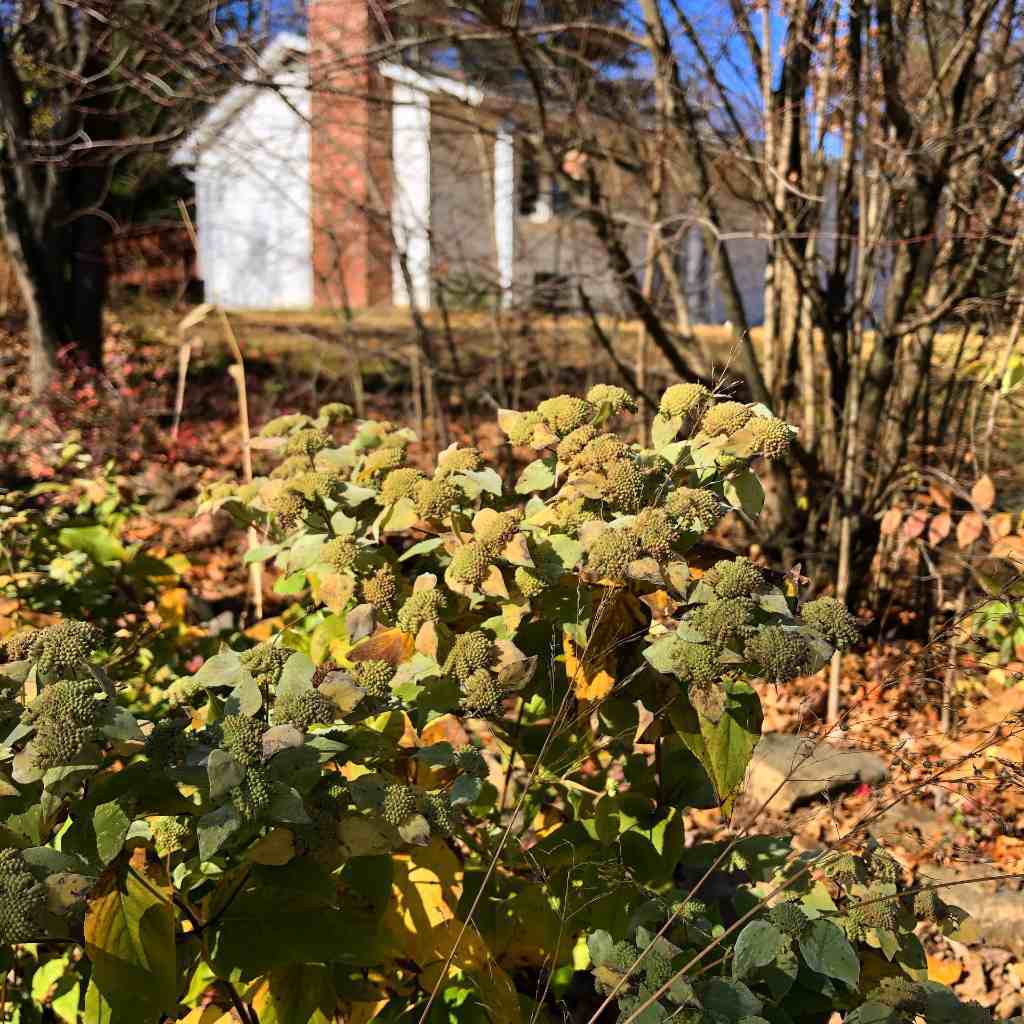
Pycnanthemum muticum in November - at this time of the year, even this plant will blush some. Many trees and shrubs had already dropped their leaves. Private garden in Bloomington, IN. ©US Perennials
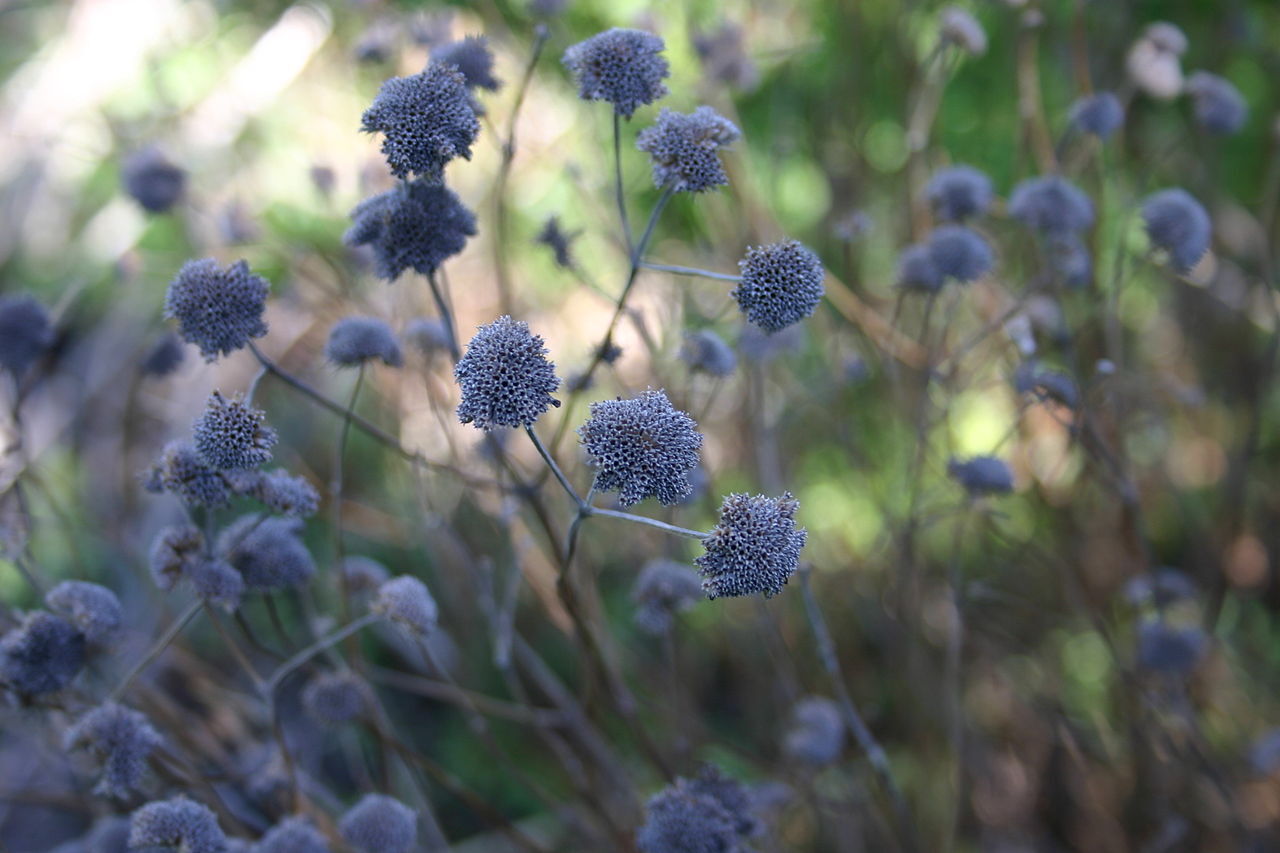
Winter look with more visible clusters of seedheads. The "octopus" shape is also visible and is one of the distinguishing features of this plant. ©SB_Johnny, Commons Wikimedia
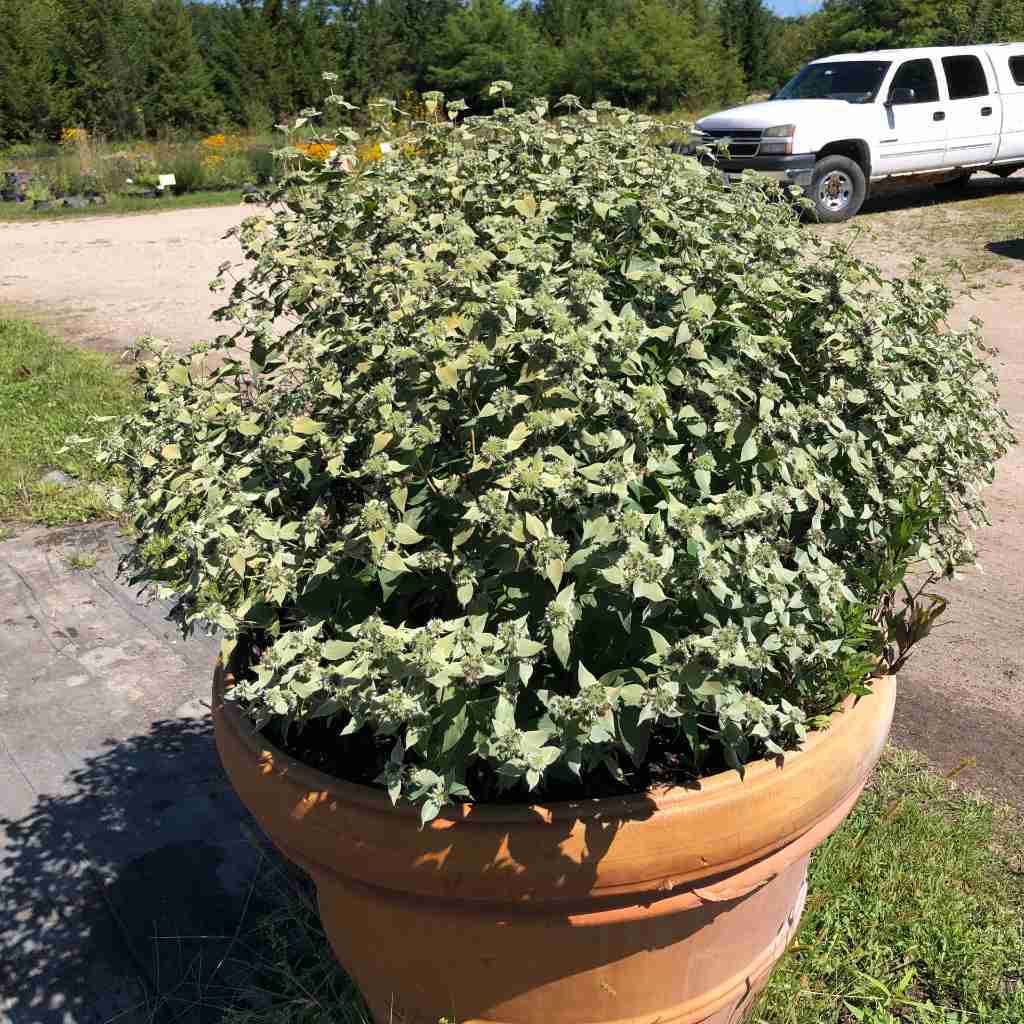
Pycnanthemum muticum in large container at Intrinsic Perennial Gardens ©US Perennials
Special thanks belongs to Andrew Marrs Garden Design for providing stunning pictures!
